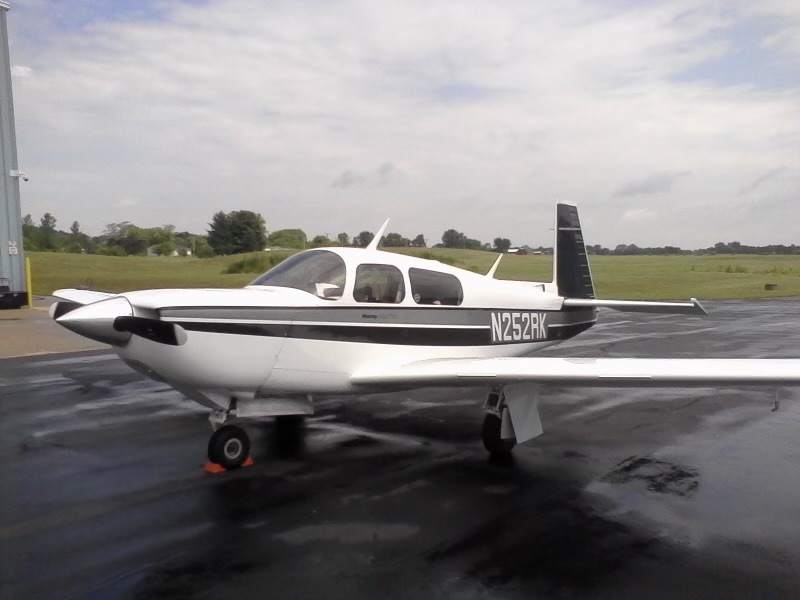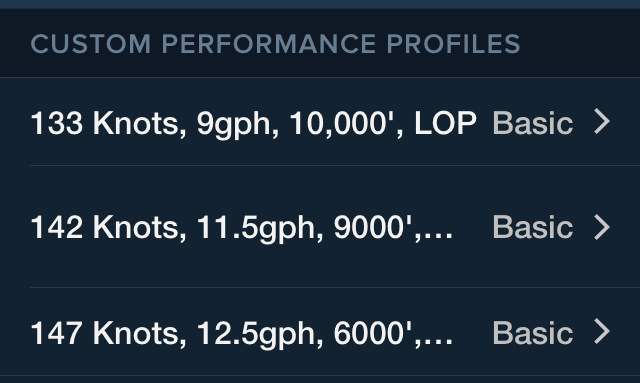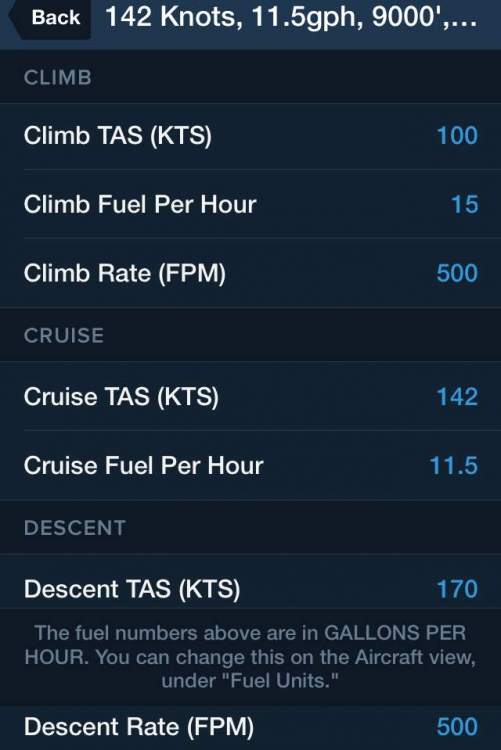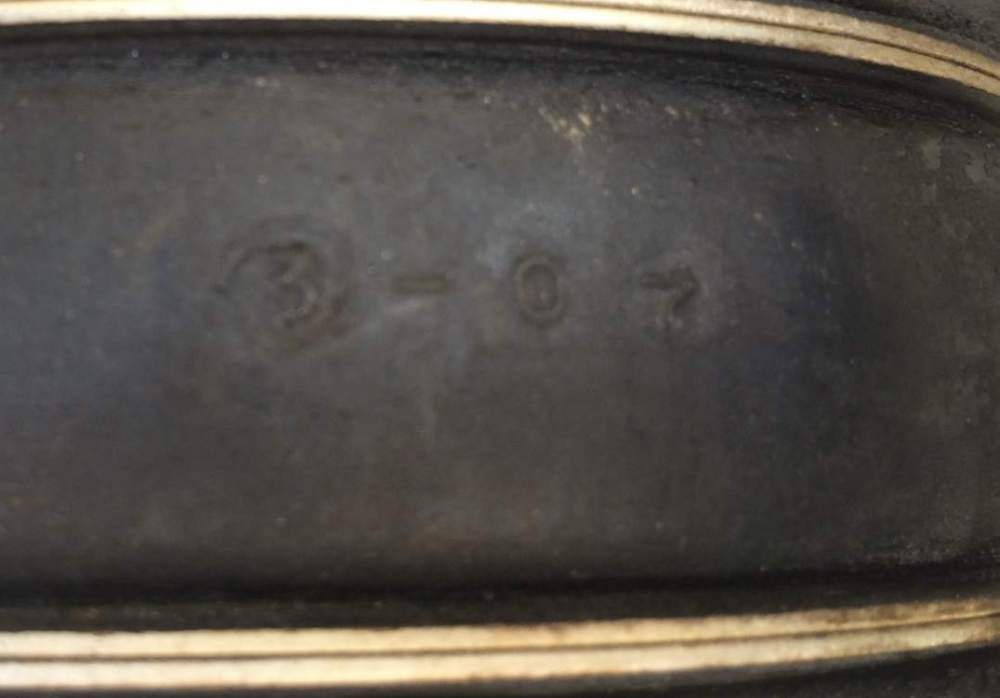-
Posts
5,748 -
Joined
-
Last visited
-
Days Won
28
Content Type
Profiles
Forums
Blogs
Gallery
Downloads
Media Demo
Events
Everything posted by Ragsf15e
-
Recommend waiting on gfc500 or trutrack. In the meantime, get someone to show you how to use your stec30 on approach. It will trac the localizer perfectly. If you’re trimmed and on speed at the faf, small power change and you’ll follow the glide slope right on down. It really can minimize your workload. Very small trim/power changes while the AP does the lateral corrections. You may never want that more expensive AP!!
-
Obviously IPad with an Ahrs works pretty good as a backup of last resort, and I’d use it if I had to. I think the AHRS in my gtx345 is pretty accurate & stable. It’s the Bluetooth connection and occasional ipad/FF restart that would worry me. I’m gonna get an AV-20S as a backup ADI. At least it’s purpose built and has internal ahrs. One other thing I think about as a backup... if I lose the ADI, get the autopilot on asap if not already. My stec30A is rate based, which is usually a drawback, but it works just fine without the adi. Use the heading bug and gentle trim/power adjustment to get on a good instrument approach or better yet, get vfr.
-
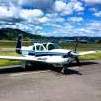
Seat Cam Chewed Up - Replacement Needed
Ragsf15e replied to DualRatedFlyer's topic in Vintage Mooneys (pre-J models)
If @Sabremech has any more of these Id gladly send a picture of mine which is shot in exchange/purchase of a new set. No different than sending your throttle cable to macfarlane for them to make you an owner produced part... -
Yep, it’s weird, but if you buy one from an msc or Mooney, it’s a mcfarlane though. Just got legal by going through the manufacturer.
-
Unless I’m wrong, mcfarlane will make an identical if you send yours, but won’t sell you a pma’d mooney one. Have to get it through msc or Mooney... am I wrong?
-
If possible, lube it like you’re asking. However, I replaced mine with parts from the MSC in Oklahoma (very good service over the phone, best price). Mine were 1968 original, so yours may have some life left. My IA said they were kind of a pain to get properly routed and set for gear warning horn. The individual throttle cable is around $600.
-
Oh boy, can o worms!
-
Full right, but not yet pushed.,,
-
The switch shuts down right mag during start sequence so it will use the sos and left mag at 0 tdc timing. The instant you let off the switch, the both mags comes on line normally... and in your case fires the engine. Something is wrong with your switch wiring or left mag/sos wiring. Likely the switch is grounding both mags in the start position instead of just the right or something similar. That would still support normal mag check. Im no a and p, but I learned this on MS like a week ago.
-

m20f M20F Annual - Recommendation
Ragsf15e replied to HwkIFan's topic in Vintage Mooneys (pre-J models)
Where in Texas? Lots of us have good/bad experience with shops there. It’s a big place. You might wanna start with a recommended place within driving distance. -

m20f M20F Annual - Recommendation
Ragsf15e replied to HwkIFan's topic in Vintage Mooneys (pre-J models)
I’d highly recommend looking local. Find a shop in S. NV at least. Build a relationship. You want someone close who will get to know your airplane over a long time and be close for issues/help/questions even when it’s not annual time. Flying somewhere else to save a buck may cause more problems in the long run. How much flat rate for inspection is your current shop asking? -
Yep, that definitely happens on my GNS430 as it will only display a limited number of traffic and at certain ranges. Usually it prioritizes well and it’s not an issue. I also use ForeFlight and it seems to display all the traffic. In this case, traffic didn’t show on either.
-
For my 68F I use these numbers. They are a bit conservative, however, I end up really close on time and fuel. Yes, I do go faster than 142kts sometimes... depends on the density altitude. I have 3 profiles built. Same climb/descent for each. FF on descent is same as cruise. Altitude is DA. The two fast profiles are ROP. You need an engine monitor to properly lean and get cruise set up anywhere close or you’ll just be guessing. *add 1-2 gallons for stto **numbers work for max gross. Conservative if lighter
-
I’ve seen those settings and don’t think so. Both the 430 and FF show non adsb traffic far away- from someone else’s “puck” so I’m showing traffic farther away than this guy was... and he went right by me. Was definitely weird. Flight following (or ifr) still good! Oh, and looking outside is nice too!
-
My initial internet search came up with that as well, but I figured it’s likely set up correctly as my 345 is in/out. I thought this was more a problem for folks with a 330, out only who are using a portable in solution. I’ll have to figure out how to get to that setup menu though...
-
Anyone else notice a good amount of TIS-B traffic missing? I have a GTX345 in/out display on FF ipad and on my GNS 430W. IFR just outside Seattle class B. Traffic called by ATC 12 oclock 10 miles, 1000’ above me. Nothing on TISB. It showed up just as it passed me and gave me a traffic warning on the 430. My ADSB report shows the GTX345 is working perfectly. Now that I watch it, think I see that happening more... Thoughts?
-
Does the vertical stab have tks panels on both the fiki and non fiki version? Some of the older Cirrus inadvertent systems didn’t have panels on the vert stab, but fiki version does.
-
Well said. Icing is nuanced, frustrating to predict, and sometimes dangerous. It’s Difficult to teach and everyone can form very different opinions/techniques while using the same guidance. I thought you summed it up well.
-
Trust me, I don’t disagree about the dangers of flying in ice, just on the actual faa regulation and the interpretation. The question was about what is “known ice”. Each person may have their own safe or unsafe definition of that. I was trying to show that the FAA interpretation gives us plenty of rope to hang ourselves. This is the actual guidance. https://www.faa.gov/documentLibrary/media/Advisory_Circular/AC_91-74B.pdf
-
I disagree and so does the FAA. Known Icing is only where you find it. There are some good FAA legal interpretations on the definition of “known”. The conditions you mentioned are telling you the potential exists, but it’s not known until you fly into it and see it. Even pireps are sometimes difficult to use. Different airframes ice differently. So if a jet takes off, climbs through the 1000’ stratus at -5c and says negative icing, that’s not necessarily the same for a Mooney. However, just because a cloud is colder than 0ish, doesn’t mean you will pick up ice. There is no hard and fast rule to find ice which is why it’s real hard to predict. Sometimes you have to check the pireps, know the weather really well, and then plan your out if you actually start to see ice. Shouldn’t be near icing conditions without Fiki or a solid out (down or 180 back). If there are pireps of ice, that’s enough for me. If conditions show potential, and theres no out, I’m not going. However, if I need to descend through a thin stratus layer that’s below freezing, there are no pireps (or pireps are negative), and its vfr above and below, then go for it. You are legal. Please read the FAA interpretation for yourself. No systems are designed for SLD. Not even airliners. Ice will form on unprotected areas aft of normal protected/formation areas. Good ntsb of a twin turboprop regional crash after trying to hold in sld. Indiana I think?
-
Ahhh, thanks! That’s what I wasn’t getting! Awesome! And all on a thread I stole from tank resealing!
-
Thanks, that made sense. They are original. They are behind the axle. I just can’t get through my mind how they stick out like the video showed. They are inside the gear doors (between the door and the tire) and the gear doors come up relatively flush. I’d think that would force the brakes up into the gear well.
-
Towards the wingtip. Sandwich between the wheel and the gear door.
-
So I looked at my calipers closer today and I’m really wondering how they stick out like that video? They seem sandwiched between the wheel and gear door, parallel to the gear door. How do they end up hanging down like that video?
-

